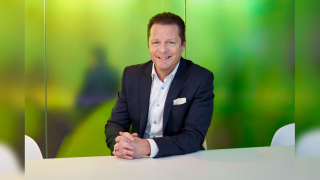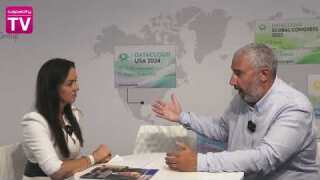If you’re planning to come to Capacity Media’s Metro Connect Europe conference in Amsterdam in September, here’s a word of warning: the European market for metro fibre is very different from the US market. Capacity has been running the US version of Metro Connect in Miami Beach for years, and will continue to do so. But in January 2018 speakers, delegates and sponsors said it was time for a European event as well.
Europe is “two years behind the US” in the metro fibre market, says Jennifer Fritzsche, a managing director at Wells Fargo Securities in Chicago, and a regular speaker at the Miami Beach event.
Marc Ganzi, founder and CEO of investment company Digital Bridge, makes the point in a different way. “The US is pretty fibre rich already, but Europe is pretty fibre light,” he says.
It’s not only that, many of those who are speaking at the Amsterdam event on 12-13 September told me. Markets are different from country to country across Europe.
Ganzi warns potential US investors that they “should understand that in Europe every business is different”. Countries across Europe are different from one another. “Compare the regulations in the Netherlands with those in France. Every country enjoys its sovereignty. You cannot take the same paintbrush as you have in other parts of the world.”
The business differs in many ways from country to country. There’s a different range of competitors, with the old incumbent having a powerful position in some countries but not in others, and there are few European-wide enterprises to be anchor tenants for a fibre provider. Each country has its own range of supermarkets, media companies, energy providers and other chains.
Fibre penetration varies enormously from country to country, with the result that average home internet speeds range from 30-40Mbps in Denmark and Sweden to 20Mbps in Spain and even less in the UK.
I asked to speak to Anthony Whelan, director of the electronic communications networks and services directorate in the European Commission’s DG Connect division, to get a better view of the EU’s strategy to stimulate fibre. He wasn’t able to talk for this feature, but delegates will be able to hear his views at the Amsterdam conference.
At last January’s US conference it was clear that the imminence of 5G mobile is becoming a major driver of metro fibre, with all four major mobile operators recognising that small cells, connected by fibre, will be vital for successful services.
US mobile operators typically outsource their towers and fibres to independent companies. In Europe, mobile companies tend to run their own infrastructure, so there is less of an opportunity for fibre companies.
Spectrum licences
The Netherlands hasn’t even awarded 5G spectrum licences yet, sighs Alex Goldblum, CEO of Eurofiber, which has extensive fibre networks there and in Belgium. However, Eurofiber is connecting small cells for three of the Netherlands’ mobile operators: Tele2, T-Mobile and VodafoneZiggo, with only incumbent KPN using its own fibre.
These are 4G LTE cells, says Goldblum, that can be upgraded to 5G when the time arrives, and Eurofiber also connects bus stops, bridges, canal locks and traffic lights, he says. “This reduces capex for each individual connection,” and it is part of a digitisation process across a number of Dutch cities.
“Amsterdam is doing a lot, Eindhoven is advanced and Utrecht is advanced,” he says. “They are going beyond enterprise – this is a real digitisation programme.”
How do the North American and European metro fibre businesses compare? “Lots of European implement-ations are masterful,” says veteran telecoms entrepreneur Hunter Newby, pointing to Germany’s GasLine, which is owned by 10 natural gas transmission and distribution companies, which have used their own rights of way along pipelines.
“Every company from outside Germany uses GasLine. Germany doesn’t even realise how important that is. It should be a case study applied to every country in Europe. GasLine is very, very important, with neutral dark fibre at reasonable rates. We can learn from Germany,” says Newby, who was the founder and CEO of Allied Fiber and is an investor and partner in several other businesses.
Italy is different again, where TIM – the former Telecom Italia – and Fastweb, owned by Swisscom, are working together. Vincenzo Lobianco, CTIO of the regulator, AGCom, says: “Flashfiber is a joint initiative between TIM and Fastweb for FTTH in certain cities. It sells to TIM and Fastweb but could be in the wholesale market.” He adds: “In Italy we have an interesting situation with competition in the metro fibre market.” Open Fiber, owned by electricity company Enel, is building its own fibre net-works, though in late July the deputy prime minister, Luigi di Maio, suggested it could merge with TIM’s infrastructure division.
Unlike many countries Italy never had a significant cable TV infrastructure, which means, says Lobianco, “we have had to cover the gap between copper and fibre and we had to start from scratch”. But TIM’s cabinets are close to customers, so if they’re connected to fibre, the copper last mile, or last 150m on average, is short enough to “carry 100Mbps without any problem in most cases”, he notes.
Vincent Teissier, managing director of Cogent Communications in France, knows the metro fibre market in Europe as a buyer. “We need fibre to connect our data centres, and there are corporate opportunities in Europe for our US customer base,” he says. “The market is well developed and there are a lot of different fibre providers. Usually it isn’t difficult to find a metro fibre.”
He mentions companies such as Stokab, which uses Stockholm’s utility ducts, and BT’s last-mile copper and fibre subsidiary Openreach, among potential providers. There’s a fibre-sharing agree-ment in France, he notes, “and every German town has a utility with its own fibre network”, he adds. “The reality is the barriers to entry aren’t high,” says Teissier. “After 20 years of deregulation in Europe you have the people and skills to generate this new commerce. Different countries in Europe have different regulations, and that creates challenges but also opportunities.”
Consolidation ahead
What can Europe learn from the US? “Scale, scale, scale,” says Newby. “But it needs to be scale with the right corporate structure. If a company such as GasLine were to be acquired by a financial operator the rules would change.” He admires other European fibre companies such as Eurofiber and euNetworks. “And there are so many niche players.” There will be consolidation, he agrees, “for scale”.
This has already started, notes Fritzsche. “It seems every week there are new European fibre deals with high multiples,” she says. Europe is a very different type of market, with a dense urban population. “The metro fibre in the cities is important, but a lot of the US is where the buffalo roam,” she jokes. She compares a metro fibre infrastructure in a city with the cardiovascular system. “You need the veins to carry the blood,” Fritzsche says.
There are more greenfield installations in Europe, she adds, but they need to be future-proof. Networks were installed with 400 fibres not long ago; now she’s seeing 1,700 fibres as the norm. “Watch the data centres,” she adds. Data centre owners expect Europe to be a big, big market. “It wouldn’t surprise me to see them thinking outside the box.”
What are the main differences between North America and Europe for the metro fibre business? Europe’s data protection rules, says Fritzsche. They’re an added complication for fibre providers and data centre companies. “And even before that, you’re different little countries and that makes it more complicated.”
Epsilon CEO Jerzy Szlosarek agrees that “the whole data-centre interconnection market” is driving investment and upgrades in Europe. “There’s a huge push to modernise and upgrade the infra-structure. There’s a lot of movement in the market.” Carriers are having to double and triple their bandwidth, he says, agreeing with Fritzsche. “The good news for us is that there are more options. We do depend on there being a very healthy market to chose from many providers.”
He’s coming to Metro Connect Europe “to interconnect with as many providers as possible, national and regional”, he says. “Piecing together the right dark fibre providers is very important and strategic for us. We depend on a handful of facilities-based operators to help our growth.”
But in Europe, says Ganzi, “the business model for metro fibre and small cells is not there yet”. There are not yet plans for “thousands of nodes as in the US”, he warns. “The biggest area in Europe is fibre to the home (FTTH) – and that has turned into a holy war in Europe. Fibre is needed more to the home than to the enterprise.” In Europe it’s being done by the incumbents, says Ganzi, and “private equity backed competitors looking to take market share from the incumbents”.
Goldblum emphasises that potential investors need to consider each country as a separate market. “Spain is advanced in FTTH. The Netherlands is advanced in fibre to the business. Germany is just starting fibre deployment. Each country has a distinct approach.” In time, this will have an impact on the capacity needed by core networks. Eurofiber focuses on fibre to the business. “Most alternative operators do both home and business, but we focus on just business.”
He agrees that the “North American market is slightly ahead” of Europe, not only because mobile operators are planning small cells earlier than their European counterparts, but because fibre companies have a different focus: in the US carriers “tend to talk only about large enterprise and federal government”, and less about medium-sized enterprise and local and regional government.
In Europe utilities are more involved in fibre, he adds – echoing Newby’s point about Germany’s GasLine. It’s a characteristic feature of the European market, says Goldblum, “but only in certain markets”, he adds. “It depends on the incumbents” in each country, he notes. And the incumbents – like everything else in Europe – are different from country to country.





